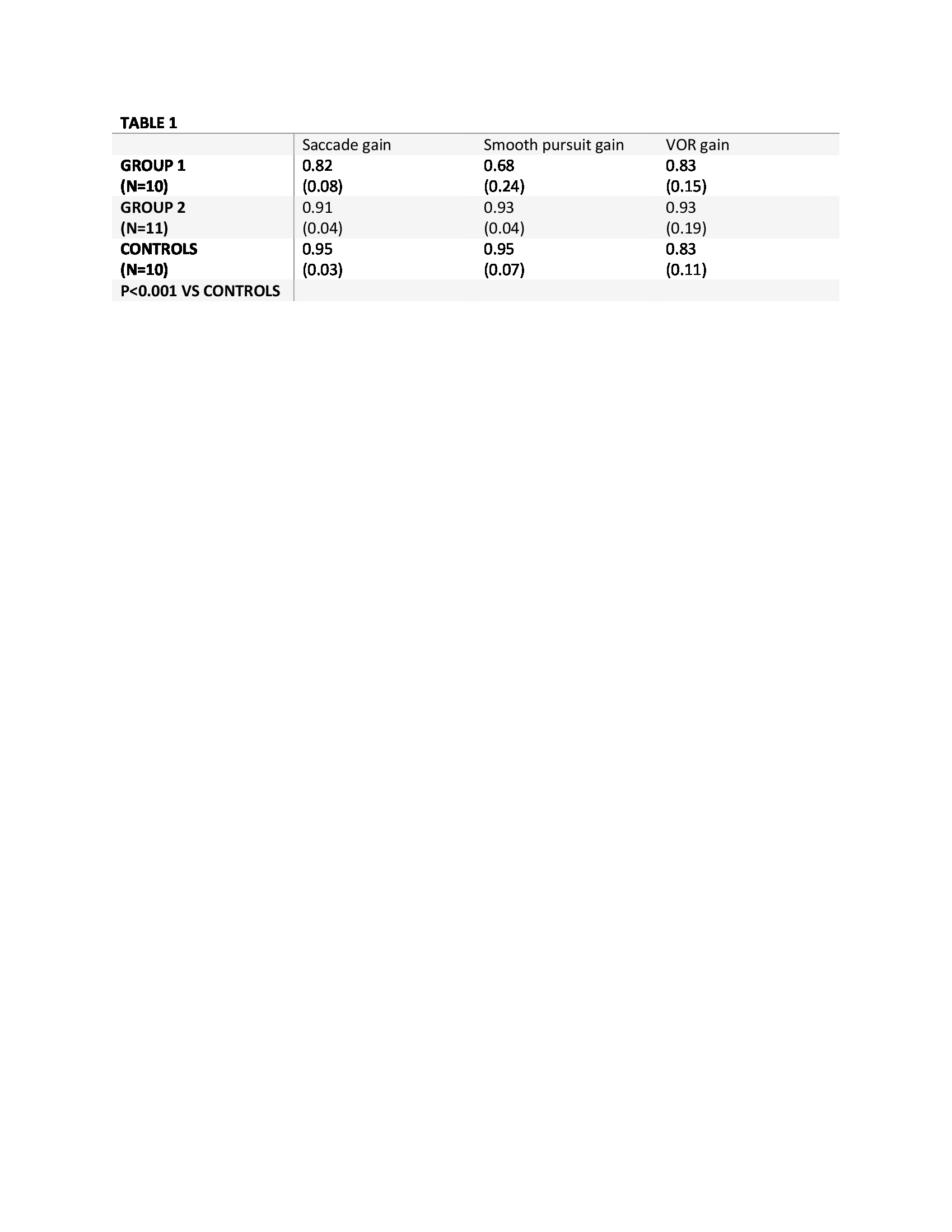Session Information
Date: Sunday, October 7, 2018
Session Title: Other
Session Time: 1:45pm-3:15pm
Location: Hall 3FG
Objective: This study aims to demostrate that the posterior cerebellar vermis controls both saccade precision and smooth pursuit velocity in humans.
Background: The posterior vermis and fastigial nuclei are involved in the control of saccade accuracy. Ablation of these two structures determines saccade hypometria. The ocular motor signs results from lesions like tumorous, demyelination or pure cerebellar infarction.
Methods: Twentyone patients (age = 47-56 years) with a cerebellar infarction were included. We excluded the patients with a coexisting brainstem infarction. The location of the infarction was confirmed from MRI axial sections. We formed 2 patient groups. Group 1 had 10 patients with an infarction in the territory of the posterior inferior cerebellar artery. Were affected pyramis, nodulus, uvula, tuber, clivus and the inferior part of the ipsilateral cerebellar hemisphere. Eye movements were observated after 29 days after stroke. Group 2 had 11 patients with an infarction in the territory of the superior cerebellar artery and were affected variably the tonsil, gracilis, the semilunaris inferior, superior,anterior. The flocculus was not affected. Control group included 10 normal patients. Eye movements were recorded by electro-oculography. We obtained saccadic, smooth pursuit and vestibulo-ocular reflex (VOR) gains in each patient group and compared with those of the control group. [Figure 1]
Results: In group 1 the saccadic gain was decreased compared with control group or group 2. In group 2 was similar to control group. The smooth pursuit gain was decreased in group 1, also. The decrease in the smooth pursuit gains and saccade hypometria were observed in group 1 but not in group 2, because the main difference between the 2 groups was damage to the posterior vermis in group 1. The VOR gain was not significantly different from the control group. [Table 1]
Conclusions: Because the flocculus, cerebellar peduncles and brainstem were spared, the saccade hypometria and smooth pursuit deficit found in patients from group 1 confirms that the posterior cerebellar vermis is involved in the control of eye movements.
References: Amarenco P, Hauw JJ. Anatomie des arteres cerebelleuses. Rev Neurol 1989;145:267-76.
To cite this abstract in AMA style:
M. Munteanu. Eye movement disorders after cerebellar infaction [abstract]. Mov Disord. 2018; 33 (suppl 2). https://www.mdsabstracts.org/abstract/eye-movement-disorders-after-cerebellar-infaction/. Accessed May 15, 2025.« Back to 2018 International Congress
MDS Abstracts - https://www.mdsabstracts.org/abstract/eye-movement-disorders-after-cerebellar-infaction/


